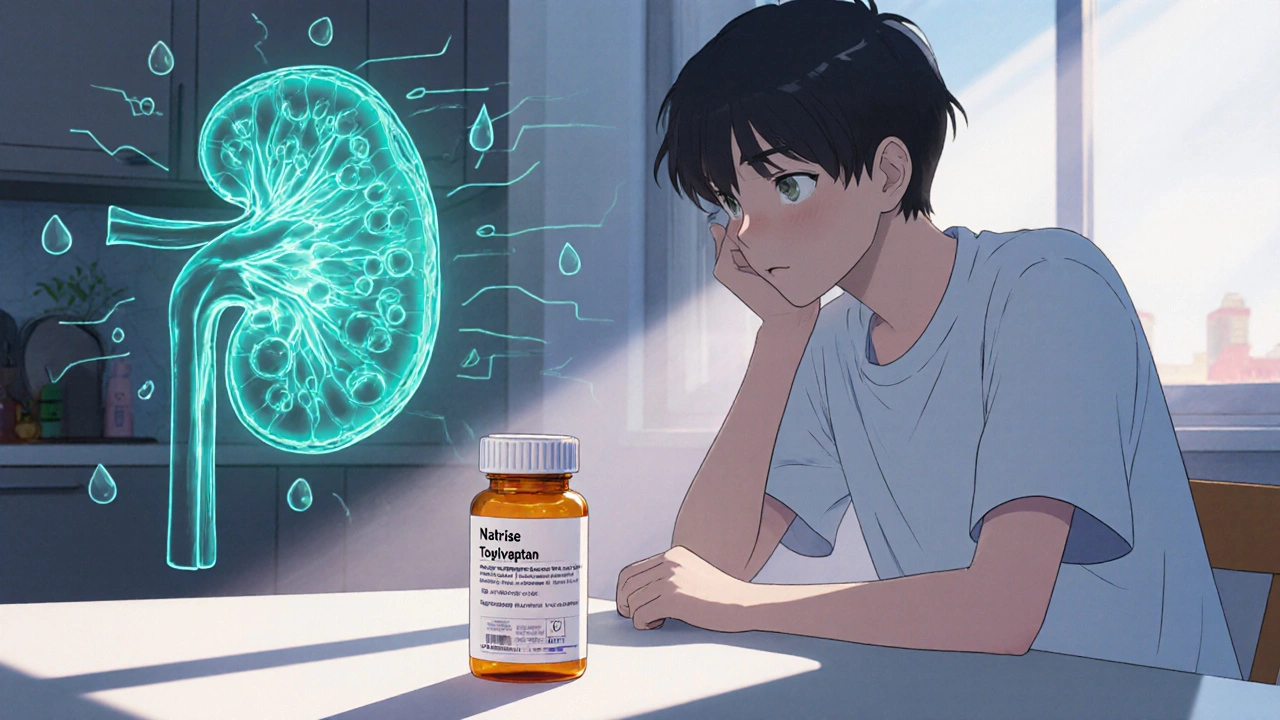When working with Tolvaptan, a selective vasopressin V2‑receptor antagonist used to treat certain forms of kidney disease and low blood sodium. Also known as Samsca, it slows cyst growth in Autosomal Dominant Polycystic Kidney Disease, a genetic condition where fluid‑filled cysts enlarge the kidneys over time and raises serum sodium in Hyponatremia, a state of dangerously low sodium often caused by the syndrome of inappropriate antidiuretic hormone secretion. The drug works by blocking the V2 receptor, which reduces the kidney’s response to vasopressin, thereby limiting water reabsorption and cyst expansion. In short, Tolvaptan connects three core ideas: a receptor target, a disease focus, and a safety profile that demands regular liver monitoring.
Patients with ADPKD usually start Tolvaptan after confirming a rapid decline in kidney function (eGFR drop >5 mL/min/1.73 m² per year). The usual dose begins at 45 mg in the morning and 15 mg in the evening, then titrates up to a maximum of 90 mg twice daily if tolerated. For hyponatremia, the starting dose is lower—15 mg twice daily—and increases based on serum sodium response. Regardless of the indication, a key attribute is the need for liver function tests before initiation, then monthly for the first 18 months, and every three months thereafter. Elevated ALT or AST levels (>3× ULN) trigger a dose pause or discontinuation. Aside from liver checks, patients should stay hydrated but avoid excess water intake that could dilute sodium further. Common side effects include thirst, dry mouth, and increased urination; these are dose‑related and often lessen with gradual titration. Rare but serious adverse events involve fulminant hepatitis, so any unexplained abdominal pain or jaundice warrants immediate medical attention. Interaction wise, Tolvaptan is metabolized by CYP3A4, so strong inducers (like rifampin) lower its effectiveness, while strong inhibitors (like ketoconazole) raise exposure and risk of toxicity. Regular review of other meds—especially diuretics and other antidiuretics—helps keep the treatment safe.
The collection below pulls together articles that touch on medicines and conditions that often appear alongside Tolvaptan in a kidney‑focused care plan. You’ll find comparisons of phosphate binders such as Sevelamer, guidance on travel with kidney meds, and practical tips for managing side‑effects of blood‑pressure combos. Together they paint a broader picture of how Tolvaptan fits into everyday health decisions for families dealing with kidney disease, electrolyte imbalance, and related treatments.

A detailed side‑by‑side comparison of Natrise (Tolvaptan) with alternative ADPKD treatments, covering efficacy, safety, cost and practical guidance.
Read More© 2025. All rights reserved.